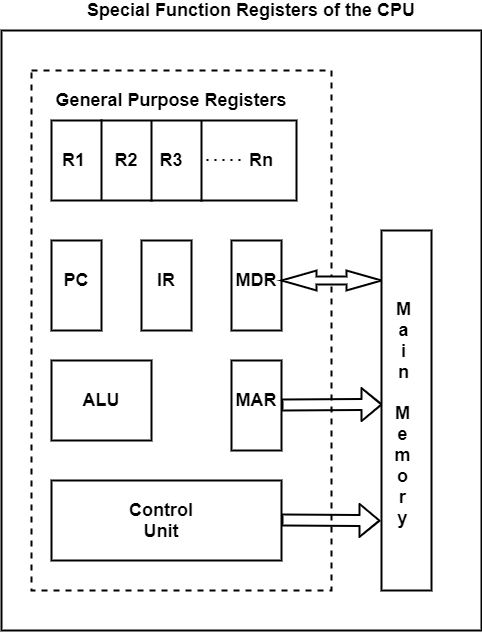
- Computer - Home
- Computer - Overview
- Computer - Advantages & Disadvantages
- Computer - Classification
- Computer - Applications
- Computer - History & Evolution
- Computer - System Characteristics
- Computing Origins
- Computer - Origins
- Computer - Generations
- Computer - Types
- Computer Components
- Computer - Components
- Computer - CPU
- Computer - CPU Components
- Computer - Arithmetic Logic Unit (ALU)
- Computer - Control Unit
- Computer - Input Devices
- Computer - Output Devices
- Computer - Memory Units
- Computer Hardware
- Computer - Hardware
- Computer - Motherboard
- Computer - GPU
- Computer - PSU
- Computer Software
- Computer - Software
- Computer - Software Types
- Computer Data Storage & Memory
- Computer - Data Storage
- Computer - Types of Data Storage
- Computer - Hard Disk Drives (HDD)
- Computer - Solid State Drives (SSD)
- Computer - Memory Cards
- Computer - Optical Storage
- Computer - NAND Flash Memory
- Computer - NVMe Memory
- Computer - CompactFlash Card
- Computer - Cloud Storage
- Computer Memory
- Computer - Memory
- Computer - Primary Memory
- Computer - Secondary Memory
- Computer - RAM
- Computer - ROM
- Computer - DRAM
- Computer - VRAM
- Computer - Cache Memory
- Computer Internet & Intranet
- Computer - Internet and Intranet
- Computer - Internet
- Computer - Extranet
- Computer - Websites
- Computer Office Tools
- Computer - Word Processors
- Computer - Spread Sheet
- Computer - Power Presentations
- Computer - E-mail Tools
- Computer Miscellaneous
- Computer - Ports
- Computer - Number System
- Computer - Number Conversion
- Computer - Data and Information
- Computer - Networking
- Computer - Operating System
- Computer - Keyboard Shortcut Keys
- Computer - Virus
- Computer - Antivirus
- Computer - How to Buy?
- Computer - Available Courses
- Calculator Vs. Computer
- Brain Vs. Computer
- Analog Vs. Digital Computer
- Supercomputer Vs. Mainframe Computer
- Mainframe Vs. Minicomputer
- Printer Vs. Scanner
- OCR Vs. MICR
- File Vs. Folder
- exFAT Vs. FAT32
- FAT32 Vs. NTFS
- FAT32 Vs. exFAT Vs. NTFS
- CPU Vs. GPU
- GUI Vs. CLI
- GUI Vs. CUI
- Cache Memory Vs. Virtual Memory
- Register Vs. Memory
- RAM Vs. CAM
- SRAM Vs. DRAM
- DDR2 Vs. DDR3
- PROM Vs. EPROM
- CD Vs. DVD
- Blu-Ray Vs. DVD
- MMU Vs. MPU
- Computer Terminologies
- Microsoft Windows
- Desktop
- Monitor
- Microphone
- Keyboard
- Keypad
- Mouse
- Printer
- Webcam
- Floppy Disk Drive
- Compact Disc
- Program
- Incognito Mode
- Electronic Mail (E-Mail)
- Server
- Cloud Hosting
- Minicomputers
- Supercomputer
- Bit
- Byte
- Kilobyte
- Megabyte
- Terabyte
- Yottabyte
- Zettabyte
- Exabyte
- Petabyte
- JEDEC
- Hub
- Block Storage
- Username
- URL
- Num Lock
- BIOS
- Bluetooth
Computer - Control Unit
A control unit drives the corresponding processing hardware by generating a set of signals that are in sync with the master clock. The two major operations performed by the control unit are instruction interpretation and instruction sequencing.
What is a Control Unit
The control unit is a part of the Central Processing Unit (CPU). The CPU is divided into the arithmetic logic unit and the control unit. The control unit generates the appropriate timing and control signals to all the operations involved with a computer. The flow of data between the processor, memory, and other peripherals is controlled using the timing signals of the control unit.
Functions of Control Unit
The main function of a control unit is to fetch the data from the main memory, determine the devices and the operations involved with it, and produce control signals to execute the operations.
The functions of the control unit are as follows
- It helps the computer system in the process of carrying out the stored program instructions.
- It interacts with both the main memory and arithmetic logic unit.
- It performs arithmetic or logical operations.
- It coordinates with all the activities related to the other units and the peripherals.
The processor contains several registers and special function registers for temporary storage purposes, in addition to the arithmetic logic unit and control unit. Program Counters (PC), Instruction Registers (IR), Memory Address Registers (MAR), and Memory Data Register (MDR) are special function registers.
Special Function Registers in Control Unit
The figure shows these special function registers. PC is one of the main registers in the CPU. The instructions in a program must be executed in the right order to obtain the correct results. The sequence of instructions to be executed is maintained by the PC.

The IR holds the instruction that is presently being executed. The timing signals generated by the control unit are based on the content of IR. The signals help in controlling the various processing elements that are necessary to execute the instruction.
The function of the other registers MAR and MDR is to transfer data. The address of the main memory to/from which data is transferred is stored in MAR. The data that is to be read/written from the specified address to the main memory is stored in MDR.